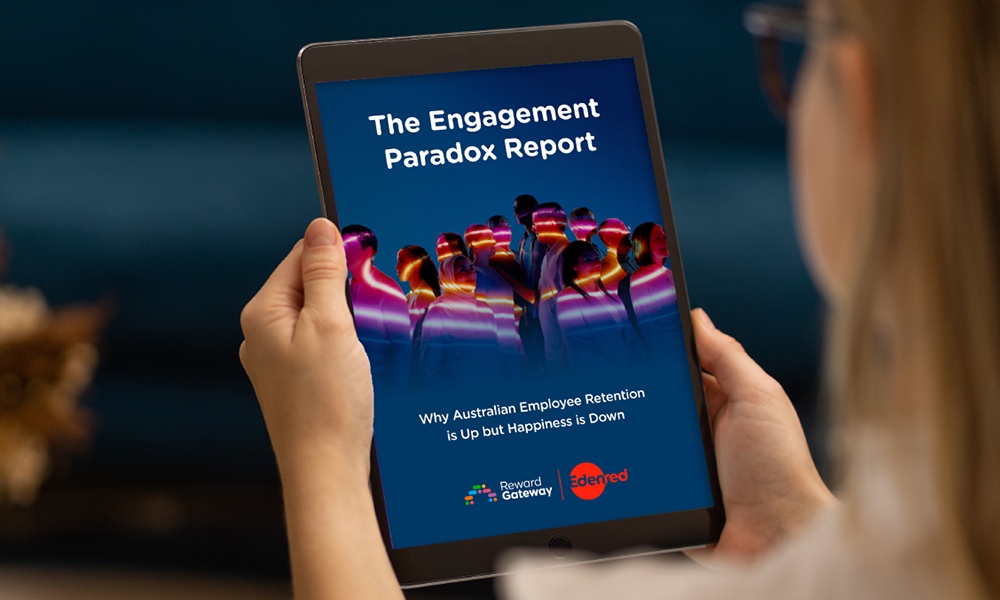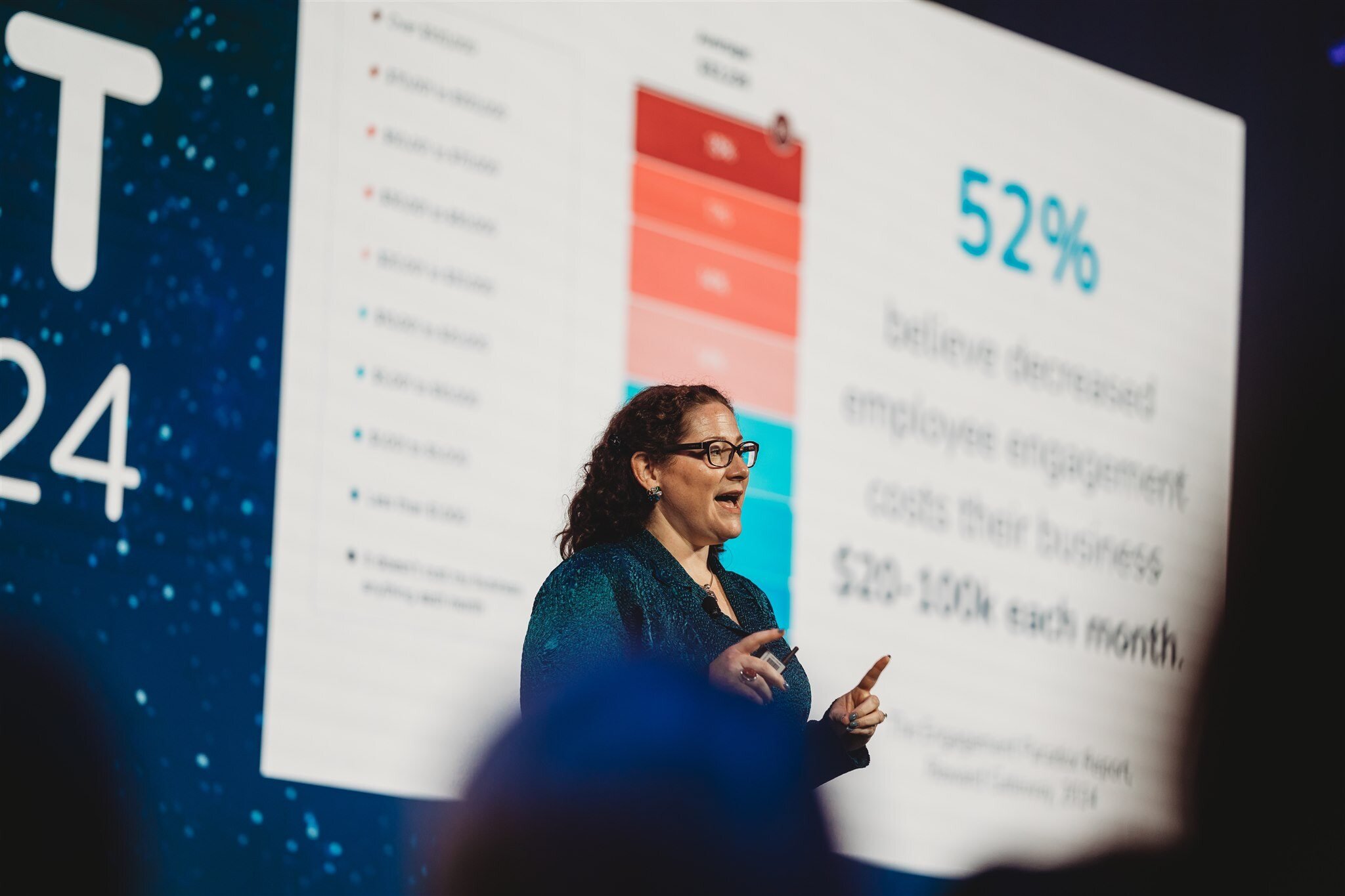In 2024, employee engagement in Australia is at an all-time low, yet retention rates are rising. At first glance, this might seem like a positive trend for businesses. However, a closer look reveals a more complex and less encouraging reality.
Rising retention, falling engagement
Our latest research report, The Engagement Paradox Report, shows that nearly half (45%) of full-time Australian employees are not looking to change roles within the next two years, and 21% are not considering a job change at all. While this stability seems promising, it masks a deeper issue: employee engagement is plummeting.
Our previous research, such as The Workplace Engagement Index and The Australian Talent & Engagement Report, found that retention was at real risk for many Australian businesses. At the start of 2024, 56% of employees had considered leaving their job in the last six months. This shows that trends in retention have significantly shifted throughout the year as retention rises.

Discover why retention is up but Australian employee engagement is down in our exclusive research.
Market conditions drive retention
Our research shows that most employees staying in their roles are doing so due to a risky job market and economy. Nearly three-quarters indicated they would consider moving jobs when the economic climate improves.
Moreover, two in five full-time employees planning to change roles in the next two years cite a lack of competitive salary or compensation as the primary reason. Unfortunately, 74% of business and HR decision makers admit it's difficult to meet salary growth expectations in the current economy.
The high cost of low engagement
Economic uncertainty and limited job opportunities affect employees' discretionary effort and intent to stay. If high performers stay put due to external factors rather than genuine enthusiasm this can lead to significant declines in engagement and productivity, ultimately hindering a company's growth potential.
Our survey indicates that 25% of people managers believe employee engagement has decreased over the past 12 months, compared to only 4% who feel it has significantly increased. This sentiment is echoed by employees, with 27% feeling less engaged than the previous year.
The consensus among business and HR decision-makers is that poor employee engagement negatively impacts performance; 87% agree that it affects business performance, with the average estimated cost of decreased engagement being over $32,000 a month.
Over half of these decision-makers believe the cost ranges between $20,000 and $100,000 monthly.
Strategies for improving employee engagement
Given these current challenges, what can leaders do to improve employee engagement?
- Focus on transparency and communication: Be open about the economic climate, company realities, and long-term vision. Clear communication fosters trust, collective responsibility, and reinforces the value of each employee.
- Provide channels for feedback: Create safe spaces for employees to share feedback and suggestions. This can be a physical feedback box or an anonymous survey platform. Understanding workforce needs and addressing concerns proactively is crucial.
- Prioritise learning and growth: Invest in skills training and development opportunities. If budgets are tight, leverage internal resources through mentoring programs to maintain growth and demonstrate commitment to employee development.
- Encourage frequent recognition and rewards: While salary increases may be challenging, explore alternative ways to motivate employees. Peer-to-peer recognition and micro-rewards can celebrate progress and raise the visibility of contributions.
While rising retention rates might seem positive, the underlying decline in employee engagement presents significant challenges for Australian businesses.
By focusing on transparency, feedback, learning and recognition, leaders can address these issues and foster a more engaged and productive workforce.
Want to access more insights from our latest research report? Download The Engagement Paradox Report now.
Get in touch with one of our team today to discover how you can drive your engagement and retention goals by enhancing the employee experience across your organisation.
%20(1).jpeg) Alexandra Powell
Alexandra Powell



